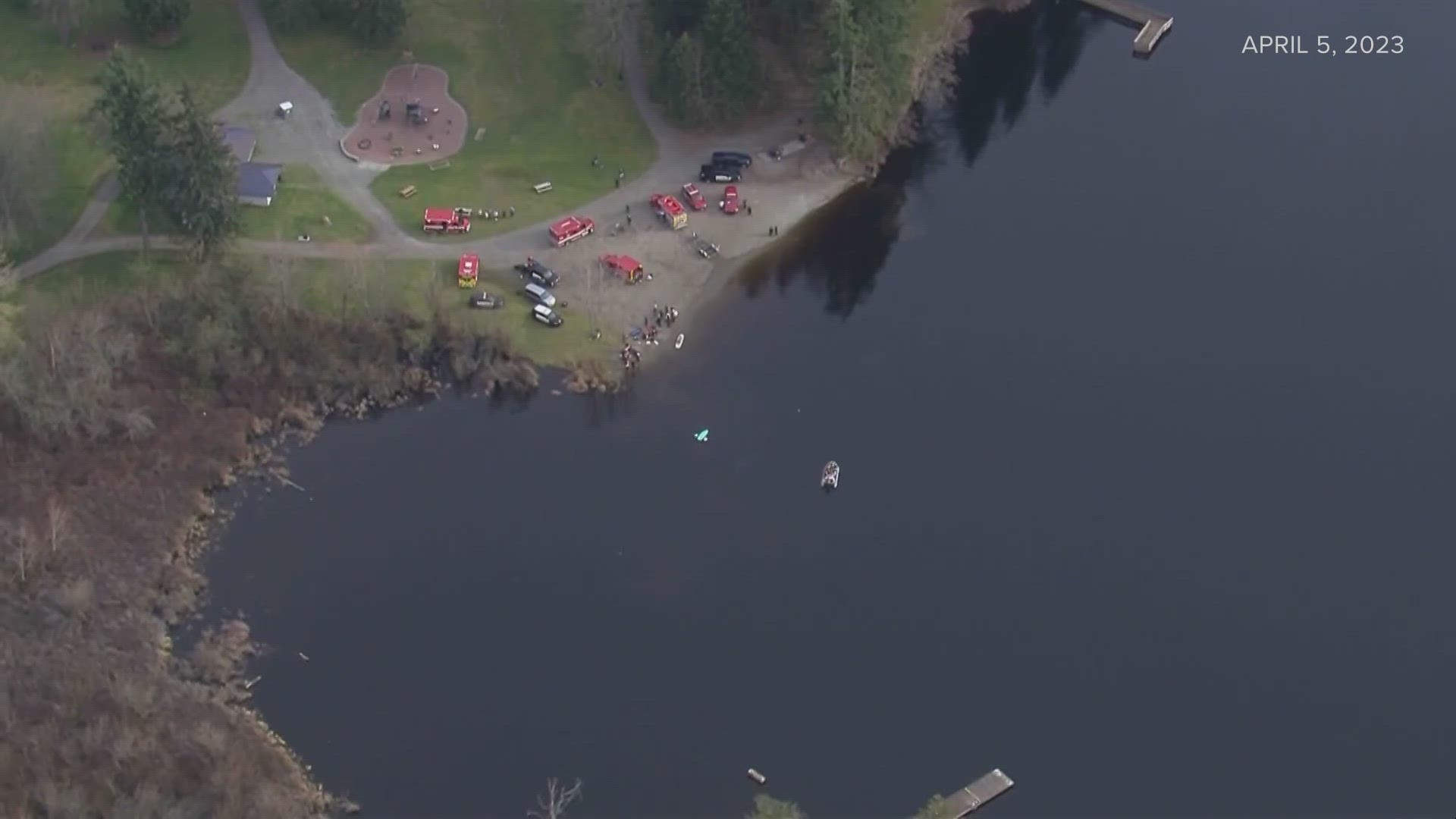AUBURN, Wash. — A man believed to be in his mid-30s is dead after his kayak flipped on an ice-cold lake in Auburn, and the good Samaritan who tried to rescue him is now in critical condition.
911 dispatchers received the call around 5 p.m. Wednesday from Fivemile Lake, a small neighborhood lake in Auburn.
"It was a single person in a kayak-type vessel that overturned. People on the shore and other boaters saw that happen, and a person on the shore ran over, got into the water, went to perform a rescue, ended up struggling in the water," said Pat Pawlak, Division Chief and spokesperson for Puget Sound Regional Fire Authority.
Authorities believe that man drowned in part because the water is near freezing -- about 45 degrees on the surface alone. He did not have a pulse, Pawlak said, when a bystander started performing CPR until crews arrived.
“When firefighters arrived, there were some bystanders who actually were able to bring one person out to the shore," he said. The person was the good Samaritan. "Firefighters quickly assessed that person. They started performing CPR on that gentleman.”
He was resuscitated and airlifted to Harborview Medical Center, where he is in critical condition. But the kayaker was still missing.
After two hours of searching, however, crews found him dead just after 7 p.m.
“They were able to remove that gentleman from the lake. That person is deceased," said Pawlak.
With water this cold in Washington lakes, rescuers urge the public to use caution and to always wear personal flotation devices.
Division Chief and spokesperson for Puget Sound Regional Fire Authority Pat Pawlak says falling into near-freezing water can shock your body, severely impairing your ability to function.
“You start losing functions of your hands, and your feet, your arms and your legs,” Pawlak said. “If you’re trying to stay afloat because you do not have a flotation device, and you can’t use your hands and your legs and so on, then in reality, it’s really hard to stay afloat.”
Pawlak is advising people to make sure they have safety gear at the ready when they go out into the water, and if they see someone struggling, make sure that they are safe before they try to help someone else.
“Instead of going out if you’re not trained to try to rescue somebody, the best thing to do is to try to reach to try to have them grab something, whether it’s a branch or your arm, something like that, where you can brace yourself to pull them in, or to throw something such as a flotation device or something like that,” he said.

